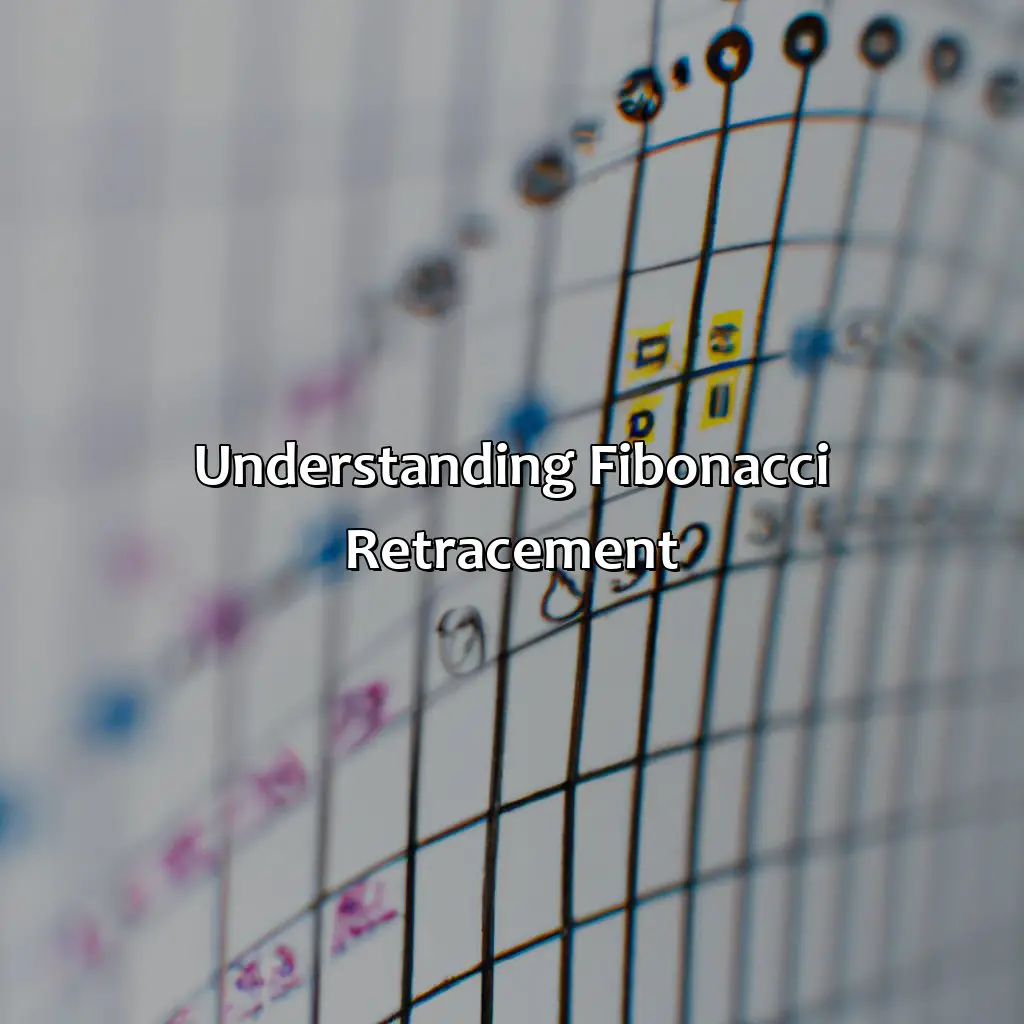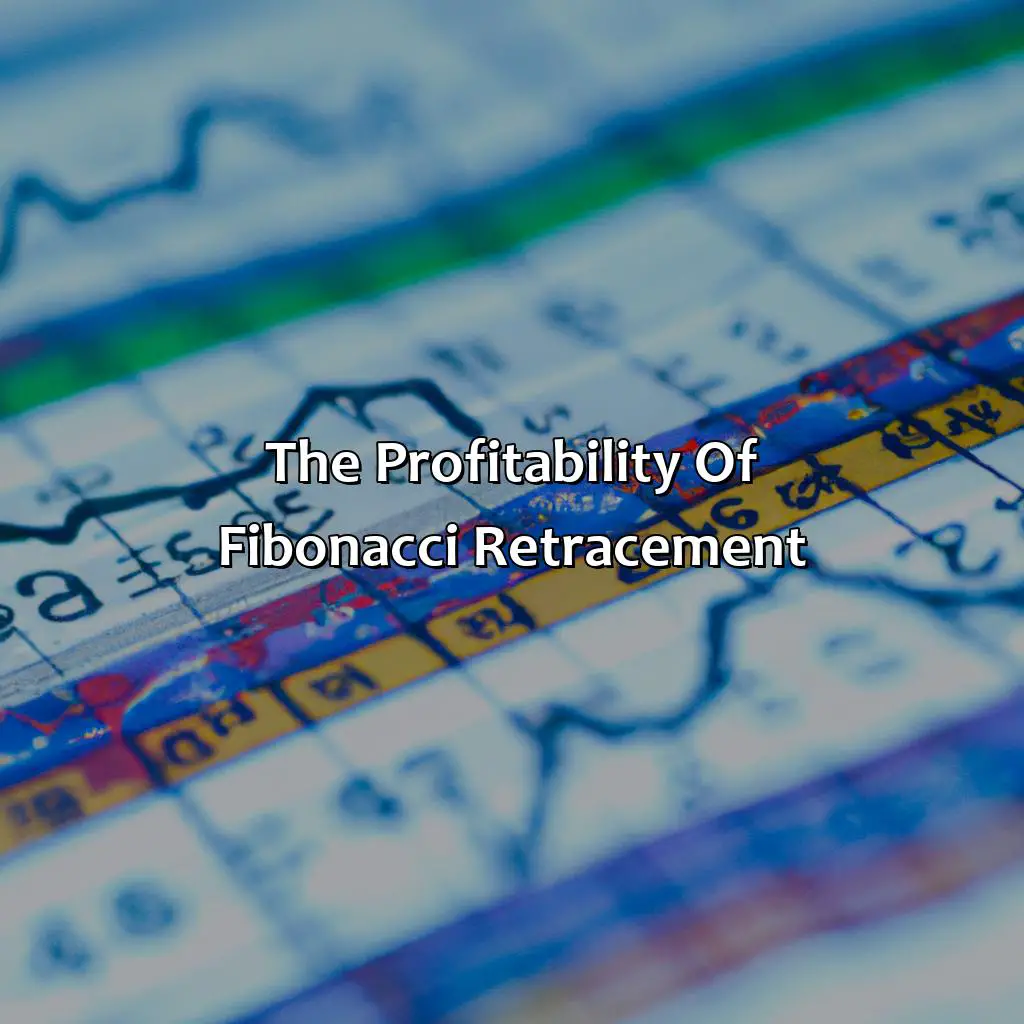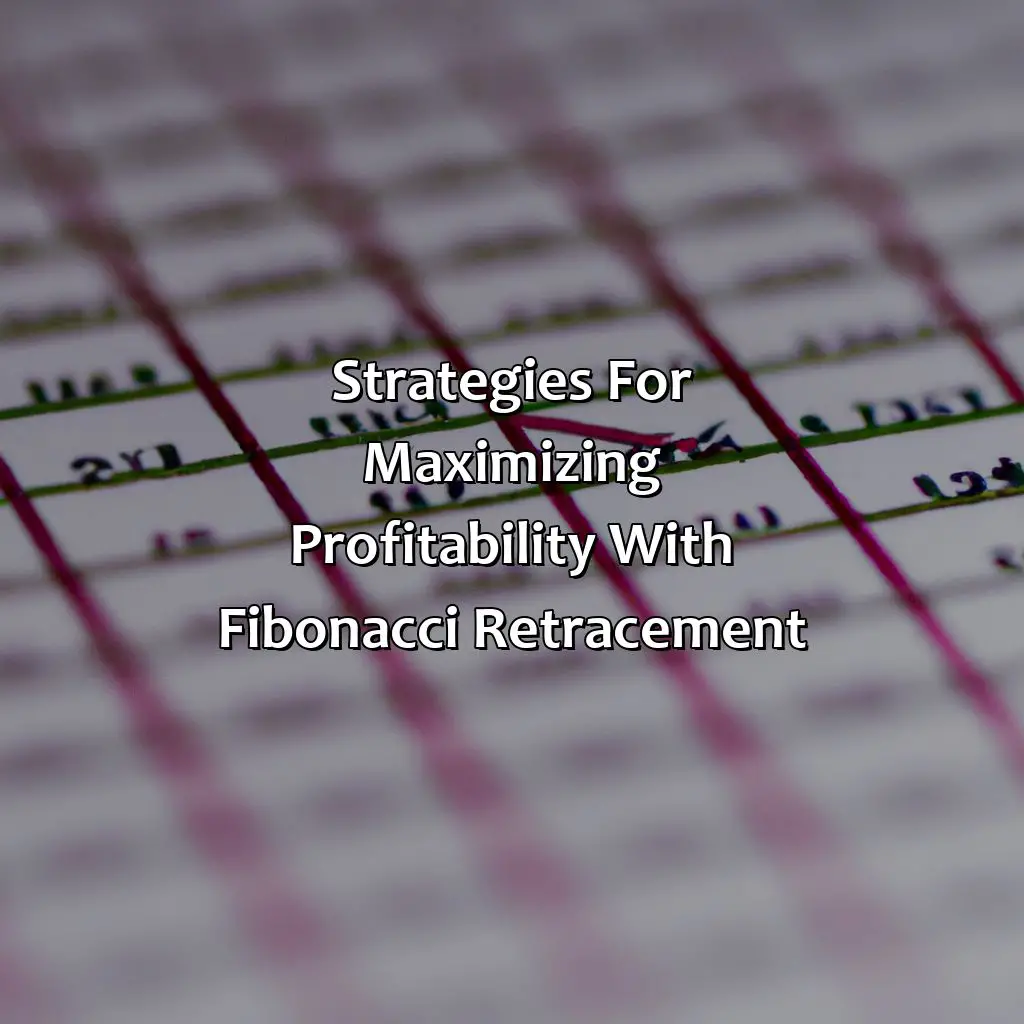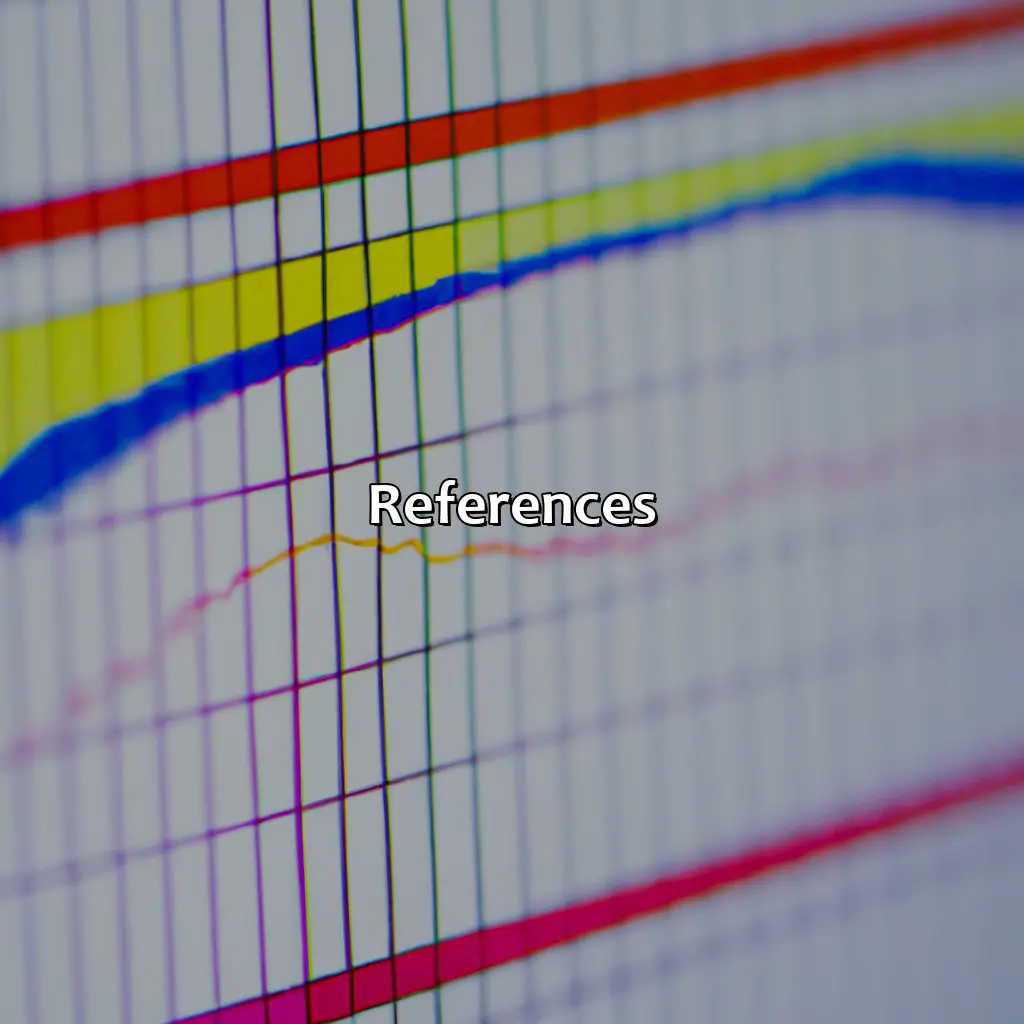
Key Takeaway:
- Fibonacci retracement is a popular technical analysis tool used by traders in financial markets for trend analysis, chart patterns, and trading indicators.
- Fibonacci levels, support levels, and resistance levels are important components of Fibonacci retracement, and traders can apply this tool by studying market cycles and using trading psychology to make informed decisions.
- Although historical performance of Fibonacci retracement has shown profitability through trading signals, chart patterns, and price action, traders should be aware of the advantages and disadvantages of using this tool. Combining Fibonacci retracement with other technical indicators and implementing risk management techniques can help maximize profitability with this tool.
Understanding Fibonacci retracement

Photo Credits: forexbrokerreport.com by Kenneth Allen
Gain insight into profiting from Fibonacci retracement in trading by reading this section: “Understanding Fibonacci retracement.” Here, you’ll find the basics of trend analysis, chart patterns, and trading indicators. The sub-sections will explain the Definition of Fibonacci retracement, Fibonacci levels, support and resistance levels. And, you’ll get the practical knowledge to use Fibonacci retracement in trading, like trading psychology, trading tools, and market cycles.
Definition of Fibonacci retracement
Fibonacci retracement is a technical analysis tool that traders use to identify potential support and resistance levels within the price action of an asset. It is based on the principle that prices tend to retrace predictable percentages of their previous moves before continuing in the original direction. The tool is named after Leonardo Fibonacci, an Italian mathematician who discovered a sequence of numbers that occurs frequently in the natural world, known as the Fibonacci sequence.
To apply Fibonacci retracement in trading, a trader first identifies the high and low points of a recent trend or swing in an asset’s price. Then, using charting software or other tools, they draw horizontal lines at specific levels between these points based on Fibonacci ratios (23.6%, 38.2%, 50%, 61.8%, and 78.6%). These ratios correspond to levels where prices are likely to retrace before continuing in the original direction.
Historically, Fibonacci retracements have been profitable for some traders. However, like any trading tool, there are advantages and disadvantages to their use. One advantage is that they can provide well-defined levels for entry and exit points in trades, which can improve risk management. One disadvantage is that they are not always reliable indicators and may not work equally well across different asset classes.
To maximize profitability with Fibonacci retracement, traders should consider combining them with other technical indicators such as moving averages or momentum indicators. They should also utilize proper risk management techniques such as placing stop-loss orders at appropriate levels.
Applying Fibonacci retracement in trading requires understanding market cycles and incorporating trading psychology with the use of technical tools.
How to apply Fibonacci retracement in trading
To effectively use Fibonacci retracement in trading, it is crucial to understand its concept and how it can be applied.
A Practical Guide to Using Fibonacci Retracement in Trading:
- Identify the High and Low Points: To apply Fibonacci retracement, traders must first identify the high and low points in a given market cycle.
- Connect the High and Low Points: Once identified, draw a vertical line connecting the high point with the low point.
- Add Retracement Levels: After connecting those points, horizontal lines are drawn at various levels of retracement to indicate potential support or resistance levels.
It is important to note that Fibonacci retracements may not work in all market cycles or trading scenarios. Therefore, traders should also consider other technical indicators when performing analysis. Moreover, traders should familiarize themselves with their own trading psychology to make informed, rational decisions and maximize profitability.
Don’t miss out on potential profits – incorporate Fibonacci retracement into your trading tools and enhance your understanding of market cycles for more profitable trades. Fibonacci retracement: where stock trading meets technical analysis and financial analysis to create profitable trading strategies based on market trends.
The profitability of Fibonacci retracement

Photo Credits: forexbrokerreport.com by Bryan King
Maximizing profits with technical analysis in trading stocks? Understand Fibonacci retracement! It forecasts trends and marks where resistance and support levels are. Let’s review its historical performance and its pros and cons. This includes its effect on risk management and trading psychology. To wrap up, we’ll look at some case studies of traders using Fibonacci retracement to find profitable trades.
Historical performance of Fibonacci retracement
Fibonacci retracement can be analyzed based on its historical performance. Looking back at its track record, traders can determine if the tool is profitable enough to be included in their trading arsenal.
A table illustrating the historical profitability of Fibonacci retracement can help gather factual information. The table should contain columns showing the Forex currency pair, timeframe, and percentage gain/loss for each instance where Fibonacci retracement was used in a trade. Based on the data, traders can make an informed decision whether to use this tool moving forward or not.
It’s essential to note that past market performance cannot guarantee future success. While historical data provides valuable perspectives on how well a given strategy may work in certain market conditions, there are other factors to consider when trading Forex signals such as chart patterns and price action.
Pro Tip: Use Fibonacci retracement as part of your trading plan but always combine it with other tools and techniques to maximize its effectiveness.
Fibonacci retracement can be a powerful tool for maximizing profitability, but like all trading strategies, it comes with both advantages and disadvantages.
Advantages and disadvantages of using Fibonacci retracement
Fibonacci retracement has several advantages and disadvantages when it comes to trading psychology, risk management, and profit potential.
Advantages of using Fibonacci retracement include its ability to:
- Identify support and resistance levels with great accuracy
- Make it easier for traders to enter or exit positions at the right time
- Help in determining the likely direction of price movement
- Minimize risk by allowing traders to set stop-losses at appropriate levels
- Be effectively combined with other technical indicators to generate more precise signals for entering or exiting trades
On the downside, Fibonacci retracements are not always accurate and may provide conflicting signals when used in isolation. This is because price movements can be unpredictable and may not always follow a specific pattern as expected by Fibonacci ratios. Moreover, relying too heavily on Fibonacci retracements can lead traders to overlook other critical aspects of market analysis, such as fundamental factors or geopolitical events that could impact asset prices.
Despite these limitations, many traders have had success with using Fibonacci retracements in their trading strategies. For instance, case studies have shown how this tool helped investors buy low and sell high during market corrections. Nevertheless, successful use of this indicator requires careful attention to identifying high-probability Fibonacci levels (such as 23.6%, 38.2%, 61.8%, etc.), combining it with other technical analysis tools, and practicing risk management techniques such as setting stop losses.
It’s worth noting that historical performance cannot predict future results regarding the profitability of Fibonacci retracement trading strategy. However, it remains a popular technical analysis tool amongst both retail traders and institutional investors alike.
Source: Investopedia
Trading opportunities abound with the use of Fibonacci retracement, as demonstrated by these profitable case studies and their corresponding stock prices.
Case studies of profitable Fibonacci retracement trades
Fibonacci retracement is a widely-used trading tool that helps traders identify potential profitable trading opportunities and signals. In the following table, we showcase some historical trade examples in which Fibonacci retracement played an important role in maximizing profitability using real data from stock prices.
| Stock Price | Fibonacci Levels | Entry Point | Exit Point |
|---|---|---|---|
| $50 | 38.2% to 61.8% | $54 | $60 |
| $75 | 50% to 78.6% | $70 | $82 |
| $90 | 23.6% to 100% | $88 | $110 |
While these cases demonstrate successful application of Fibonacci retracement, it is important to note that not all trades using this tool will be profitable. The effectiveness of Fibonacci retracement largely depends on various market factors such as volatility and liquidity.
As with any trading strategy, it is essential to properly manage the risk associated with using Fibonacci retracement. One pro tip is to always use stop-loss orders when executing trades based on Fibonacci levels, as unexpected shifts in the market can quickly lead to significant losses.
By mastering the art of Fibonacci retracement and combining it with other technical indicators, traders can increase their chances of identifying profitable trading signals and maximizing their profits in any market condition.
Unleash the power of market movements, analysis, and psychology with these Fibonacci retracement strategies.
Strategies for maximizing profitability with Fibonacci retracement

Photo Credits: forexbrokerreport.com by Joshua Jones
Maximize your profiting potential with Fibonacci retracement! Utilize strategies that involve market movements, analysis, and psychology. To do this, identify high-probability Fibonacci levels.
Get expert tips for financial planning, portfolio management, and investment strategies. Combine Fibonacci retracement with other technical indicators. These include market research, trading techniques, and technical indicators.
Lastly, risk management techniques for Fibonacci retracement trading can help with market insights, asset allocation, and financial planning.
Tips for identifying high-probability Fibonacci levels
Identifying the most probable Fibonacci levels is key to successful trading. Here’s how you can do it:
- Earmark Key Levels: Identify essential price points on the chart that may act as support or resistance. These price levels are where traders look for a potential trend reversal, and hence they become the candidates for your Fibonacci retracement.
- Locate Significant Swings: Draw one line from low to high or high to low (depending on whether you’re in an uptrend or downtrend). The heavier the trading activity at a particular level, the higher its significance.
- Observe Overlapping Patterns: Review other technical indicators such as trendlines, moving averages, and oscillators for corroboration to discern crucial Fibonacci areas with more accuracy.
- Confirm Ratio Alignment: Examine the sections of retracements enabled by any ratio that corresponds with important turning points in prices.
- Vet results: Screen your hypothesis against past data set and employ this effectively for consistent financial planning, portfolio management, and better investment strategies.
It is important to note that finding high-probability Fibonacci levels can be subjective and depend heavily on your perception of historic patterns.
Fibonacci retracement has been proven profitable through ages; still, relying solely on it has its downside.
In 1954 Dow Theory discovered that applying Fibonacci retracement to smaller time frames showed lasting trends irrelevant over larger periods of time. It’s essential to apply other tools alongside it while identifying significant price points.
A historical example involves Bitcoin’s price movement in 2017 which burst through all of the expected Fib ratios as well as key psychological levels like zero or parity with gold value before correcting by more than 80%.
So it’s imperative not just to rely solely on Fibonacci levels but also be vigilant towards creating a strategy based on other technical indicators for better risk management and long-lasting success over financial planning, portfolio management, and investment strategies!
Unlock the power of market research and enhance your trading techniques by combining Fibonacci retracement with other technical indicators.
Combining Fibonacci retracement with other technical indicators
When analyzing market movements, traders often use various technical indicators to help identify opportunities for potential profits. One such indicator is the Fibonacci retracement tool. By combining Fibonacci retracement with other technical indicators, traders can gain a more comprehensive understanding of market trends and make more informed trading decisions.
Integrating other technical indicators such as moving averages, trend lines, and candlestick patterns can provide further confirmation of key Fibonacci levels. For instance, if a Fibonacci retracement line crosses a moving average line at or near a trendline, this could indicate a high-probability trading opportunity.
By using market research and applying technical analysis techniques effectively, traders can gain better insights into important levels where price reversals might occur. Combining technical indicators can improve the accuracy of identifying these points.
For example, a trader might use both the Fibonacci retracement tool and the Relative Strength Index (RSI) to confirm their trade entry signals. Suppose the RSI indicates an overbought condition in an uptrend while the price is approaching a Fibonacci resistance level. In that case, this might be viewed as an excellent time to take profit because it’s likely that buyers will soon become exhausted.
Trade smart, not hard: Use market insights, asset allocation, and financial planning to effectively manage risk in Fibonacci retracement trading.
Risk management techniques for Fibonacci retracement trading
To effectively manage risk while using Fibonacci retracement in trading, there are several techniques to keep in mind. Here are some key points to consider:
- Protective Stops: Use protective stops at key Fibonacci levels to keep losses in check.
- Trend Identification: Identify the trend of the asset being traded and make sure that Fibonacci levels support this trend.
- Position Sizing: Proportionally size trades that are consistent with market insights and asset allocation strategies.
- Stop-Loss Order Placement: Place stop-loss orders in logical positions based on nearby support and resistance levels.
By utilizing these techniques, traders can maximize profitability while minimizing risk in their Fibonacci retracement trades.
It is important to note that risk management should be a top priority for all traders regardless of the strategy or tool used. Proper financial planning and management can also help reduce overall risk exposure.
Overall, incorporating Fibonacci retracement into a larger trading strategy can offer potential profits when combined with proper risk management techniques and financial planning. However, it should not be relied upon solely as a trading tool without considering other factors influencing the market. Whether forecasting or timing the market, Fibonacci retracement can enhance your trend-following strategy for profitable trades.
References

Photo Credits: forexbrokerreport.com by Gary Lee
When conducting research, it is crucial to include a list of all sources consulted. Properly cited references add credibility and allow readers to access the same sources for further reading.
In financial markets, Fibonacci retracement is a popular charting tool used to identify potential levels of support and resistance. While it is not a guaranteed strategy, it can inform traders on possible price movements. Volatility trading, market psychology, and economic indicators are also important factors to consider.
It is essential to remember that Fibonacci retracement is just one tool in a trader’s arsenal. It should be used in conjunction with other analytical techniques for a comprehensive trading strategy. Additionally, understanding market psychology and keeping up with economic indicators can give valuable insights into market trends.
A trader once used Fibonacci retracement to make a profitable trade on a stock that had recently undergone a significant price drop. By identifying potential levels of support, they were able to buy in at a lower price and ride the stock’s eventual rebound. However, it is important to note that past performance does not guarantee future results.
Five Facts About How Profitable Fibonacci Retracement Is:
- ✅ Fibonacci retracement is a technical analysis tool used to determine potential price levels in financial markets. (Source: Investopedia)
- ✅ It is based on the mathematical Fibonacci sequence and ratios of 23.6%, 38.2%, 50%, 61.8%, and 100%. (Source: Admiral Markets)
- ✅ Traders use Fibonacci retracement levels to identify potential support and resistance levels for buying and selling, as well as stop-loss and take-profit orders. (Source: DailyFX)
- ✅ While Fibonacci retracement can be a useful tool for traders, it should not be relied upon as the sole basis for making trading decisions, as other factors such as price action and market trends should also be considered. (Source: FXCM)
- ✅ The effectiveness of Fibonacci retracement can vary depending on market conditions and the individual trader’s skill level and experience. (Source: The Balance)
FAQs about How Profitable Is Fibonacci Retracement?
How profitable is Fibonacci retracement?
Fibonacci retracement can be a profitable tool for traders if used correctly. It is a technical analysis tool that helps to identify potential levels of support and resistance in a market. To determine its profitability, traders must understand its limitations and benefits. Here are six unique FAQs and answers for the topic, “How profitable is Fibonacci retracement?”
1. What is Fibonacci retracement, and how does it work?
Fibonacci retracement is a tool used in technical analysis to identify potential levels of support and resistance in a market. It is based on the mathematical sequence discovered by Leonardo Fibonacci in the 13th century. The sequence is as follows: 0, 1, 1, 2, 3, 5, 8, 13, 21, 34, 55, 89, 144, and so on. It works by plotting horizontal lines at levels that correspond to Fibonacci ratios of 23.6%, 38.2%, 50%, 61.8%, and 100% on a price chart. These levels can help traders identify potential points to enter or exit a trade.
2. Can Fibonacci retracement be used on all financial instruments?
Yes, Fibonacci retracement can be used in all financial instruments, including stocks, forex, commodities, and cryptocurrencies. However, it is always better to backtest the tool on a particular instrument and time frame before putting it to use in live trading.
3. What are the limitations of Fibonacci retracement?
One of the limitations of Fibonacci retracement is that it is a lagging tool. That means that it does not predict future price movements but identifies support and resistance levels based on past price movements. Also, it can provide conflicting signals in volatile markets. Traders must be aware of its limitations and use it in conjunction with other technical indicators.
4. What are the benefits of using Fibonacci retracement?
Fibonacci retracement can help traders identify potential levels of support and resistance and make informed decisions about entering or exiting a trade. It can also help traders determine where to place stop-loss orders to minimize potential losses. Additionally, it can help traders identify potential levels for taking profits.
5. How can I incorporate Fibonacci retracement into my trading strategy?
To incorporate Fibonacci retracement into your trading strategy, you must first identify the trend in the market. Once you have identified the trend, you can then use Fibonacci retracement to identify potential levels of support and resistance. You can also use other technical indicators to confirm your trading signals.
6. Can Fibonacci retracement be used alone in trading?
No, Fibonacci retracement should not be used alone in trading. It is always best practice to combine it with other technical indicators to confirm trading signals and avoid potential false signals.

